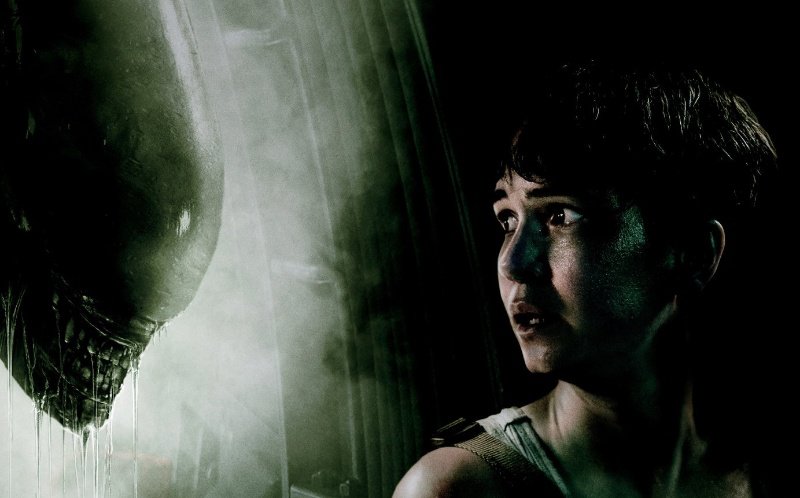With this second film in the "Alien" prequels, director Ridley Scott goes back to the movie's sci-fi/horror origins, bringing a whole new outlook with a movie that keeps you closing your eyes, grasping the armrests of your seat and being in a constant state of suspense, always expecting the worst out of the creature that haunts the protagonists of the story, adding up to the fact that it was awakened by them.
 The crew of a colonizing ship set for a remote planet, far in the galaxy, discovers what appears to be a paradise in a dark dangerous world. When the real threat is uncovered, it turns out to be far more unexpected and cruel than what they had imagined, a sudden escape must be attempted.
The crew of a colonizing ship set for a remote planet, far in the galaxy, discovers what appears to be a paradise in a dark dangerous world. When the real threat is uncovered, it turns out to be far more unexpected and cruel than what they had imagined, a sudden escape must be attempted.
Despite not moving the franchise in any new directions, it manages to make sense of "Prometheus", which was way too confusing, ambiguous and disconnected from the original "Alien" movies to understand at the time of its release.
Focusing more on the indirect threat that slowly becomes direct and active, the movie shows that the real threat for humanity is humanity itself as the human-created machine originally meant to help humans in their journey of recolonization turns out to believe humans are unnecessary and primitive, completely stripping down the worst of our nature.
 Even with major story flaws and character development issues, Rildey Scott makes "Alien: Covenant" rise from the ashes with incredible camera work, astounding effects and direction.
Even with major story flaws and character development issues, Rildey Scott makes "Alien: Covenant" rise from the ashes with incredible camera work, astounding effects and direction.The performances brought by the cast also help to cover up the fact that the movie is pointless, in terms of franchise storyline, and help disguise most of its flaws while adding depth to apparently shallow characters.
The film shows what the movie could have been if a little more effort was put during the development process. However it still manages to entertain audiences and deliver a loud and clear message about who the real threat is, and who really has the power to terminate with human existence.

